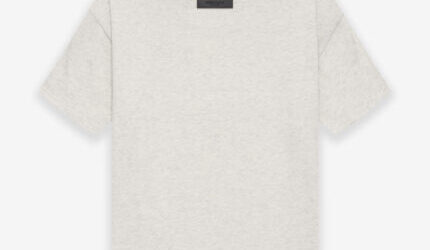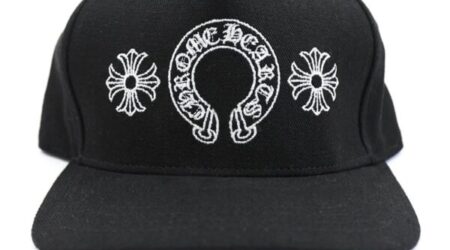“CDG Innovation: Merging Art and Fashion in a Bold New Collection”
Introduction to Comme des Garçons
Comme des Garçons, a pioneering Japanese fashion brand, was founded by designer Rei Kawakubo in 1969. Known for its avant-garde and unconventional designs, the brand has become synonymous with boundary-pushing aesthetics, challenging traditional norms of fashion and beauty. Its influence extends beyond clothing, affecting how fashion is perceived as an art form. With a focus on deconstruction, asymmetry, and an often dark, intellectual approach, Comme des Garçons has redefined the possibilities of fashion, creating a distinct voice in the industry.
Rei Kawakubo: The Visionary Behind Comme des Garçons
Rei Kawakubo, the creative force behind Comme des Garçons, studied fine arts and literature before entering the world of fashion. Without formal training in fashion design, she started working as a freelance stylist in the 1960s. Her unique approach to clothing, influenced by art and architecture, soon led her to create her own brand. Kawakubo’s design philosophy emphasizes breaking free from conventional ideas of fashion, often rejecting traditional silhouettes and instead focusing on garments that challenge the body’s form and shape.
Kawakubo’s vision is deeply rooted in abstraction and disruption, seeking to question the role of fashion in society. She once famously stated, “For something to be beautiful, it doesn’t have to be pretty.” This notion has driven much of her work, resulting in collections that explore the interplay between beauty, imperfection, and originality. Kawakubo’s work has made Comme des Garçons one of the most influential labels in modern fashion, reshaping contemporary aesthetics.
Avant-Garde Aesthetic: Deconstruction and Asymmetry
Comme des Garçons is renowned for its avant-garde aesthetic, which often embraces deconstruction, asymmetry, and unconventional materials. From its early years, the brand presented designs that blurred the lines between wearable garments and art objects. Kawakubo often explores the concept of “incompleteness,” creating clothing that appears unfinished or unrefined, with raw edges, exposed seams, and irregular shapes. This deconstructionist approach challenges conventional norms of beauty and craftsmanship.
Asymmetry plays a significant role in Comme des Garçons designs. Many of the brand’s pieces defy symmetry, featuring uneven hemlines, slanted cuts, and unbalanced proportions. By distorting the traditional silhouette, Kawakubo creates garments that seem to exist in a state of flux, constantly evolving in the way they interact with the wearer’s body. This approach disrupts the viewer’s expectations and prompts a deeper engagement with the clothing.
The Role of Gender in Comme des Garçons
Comme des Garçons has also been a major player in challenging gender norms through fashion. The brand’s designs frequently blur the distinctions between men’s and women’s clothing, offering a more fluid interpretation of gender identity. Kawakubo’s collections often feature oversized, shapeless garments that hide the body’s contours, rejecting the traditional emphasis on accentuating sexual characteristics. This approach aligns with a growing movement toward non-binary fashion, where clothing becomes a means of self-expression rather than a reflection of gendered expectations.
In 1981, Comme des Garçons made its Paris debut with a collection that featured monochromatic, oversized garments in dark, somber tones. The lack of traditionally feminine elements like bright colors, fitted silhouettes, or ornamentation challenged Western fashion norms and marked a significant departure from the prevailing aesthetics of the time. This move toward androgyny has remained a cornerstone of the brand’s identity, influencing a generation of designers and reshaping the conversation around gender in fashion.
The Impact of Comme des Garçons on Global Fashion
Comme des Garçons has had a profound influence on the global fashion industry. Its unconventional designs have inspired countless designers to experiment with form, function, and aesthetics. The brand’s embrace of deconstruction, imperfection, and asymmetry has paved the way for other avant-garde designers like Yohji Yamamoto, Issey Miyake, and Martin Margiela, who similarly challenge traditional fashion norms.
In addition to its influence on high fashion, Comme des Garçons has impacted streetwear culture, particularly through its collaborations with other brands and designers. The brand’s partnership with Nike on the iconic Air Force 1 sneakers and collaborations with streetwear giant Supreme brought Comme des Garçons into the mainstream, further solidifying its cultural relevance. These collaborations demonstrate the brand’s ability to bridge the gap between high fashion and street culture, appealing to a wide audience.
Comme des Garçons Play: The Casual, Playful Line
While Comme des Garçons is known for its avant-garde runway collections, the brand has also created more accessible lines that maintain its core design principles. One of the most notable is Comme des Garçons Play, launched in 2002. This line is characterized by its casual, playful aesthetic, featuring basic items like T-shirts, hoodies, and sneakers adorned with the brand’s iconic heart logo designed by Polish artist Filip Pagowski.
Comme des Garçons Play has achieved widespread popularity, especially among younger consumers, thanks to its more approachable designs and affordable price points compared to the mainline collections. Despite its more commercial appeal, the Play line retains the brand’s minimalist, gender-neutral ethos, offering a more relaxed entry point into the world of Comme des Garçons.
Retail and Exhibition Spaces: A Unique Approach to Fashion Presentation
Comme des Garçons’ approach to retail and fashion presentation is as unconventional as its designs. The brand’s flagship stores, known as Dover Street Market, are located in cities like London, Tokyo, and New York. These stores function as curated spaces, blending fashion with art and creating an immersive shopping experience. Unlike traditional retail spaces, Dover Street Market features a constantly evolving layout, with installations and displays that challenge the conventional notions of commerce and consumerism.
Kawakubo’s influence extends to the way fashion is exhibited in museums and galleries. In 2017, the Metropolitan Museum of Art in New York hosted a retrospective titled “Rei Kawakubo/Comme des Garçons: Art of the In-Between.” This exhibition explored the dualities and contradictions present in Kawakubo’s work, further cementing her status as a visionary who transcends the boundaries of fashion.
Legacy and Continued Innovation
Over five decades after its founding, Comme des Garçons remains at the forefront of innovation in fashion. Kawakubo continues to challenge the status quo with each new collection, refusing to conform to the cyclical nature of fashion trends. Her work is driven by a desire to create something new, to offer a fresh perspective on what fashion can be. This commitment to innovation has earned Comme des Garçons a dedicated following of fashion insiders, artists, and cultural tastemakers.
The brand’s enduring legacy is a testament to Kawakubo’s ability to continually reinvent herself and her designs. Comme des Garçons has not only shaped the fashion industry but also influenced broader cultural conversations about art, gender, and the very nature of beauty.
Conclusion
Comme des Garçons is more than just a fashion brand; it is a cultural institution that challenges the way we think about clothing, beauty, and identity. Rei Kawakubo’s uncompromising vision and dedication to innovation have solidified the brand’s place in fashion history. Through its avant-garde designs, gender-fluid approach, and commitment to pushing boundaries, Comme des Garçons continues to inspire and provoke, ensuring its relevance in the ever-evolving world of fashion.











Leave a Reply